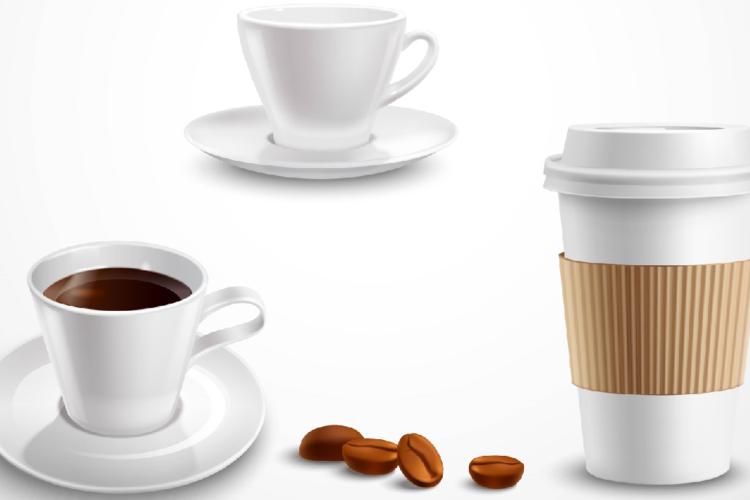Coffee is the most consumed beverage in the world, with an estimated 2.25 billion cups consumed every day. Whether you’re a coffee aficionado or simply enjoy a morning cup of joe, you may have wondered how much coffee to use per cup to achieve the perfect taste. The answer, however, is not straightforward. The amount of coffee used per cup can vary depending on several factors, including personal taste, brewing method, and coffee-to-water ratio.
Finding the perfect balance can be a daunting task, but fear not – in this comprehensive guide, we’ll explore everything you need to know about measuring and brewing coffee, including coffee-to-water ratios, measurements, brewing methods, and more. With input from coffee experts and references to scientific research, this post offers practical tips and advice to help you achieve the perfect cup of coffee. Whether you’re a beginner or a seasoned coffee drinker, this guide has something for everyone. So, grab your favorite mug, and let’s dive in!
Coffee-to-Water Ratio
The coffee-to-water ratio is one of the most critical factors in achieving the perfect cup of coffee. This ratio refers to the amount of coffee used per unit of water. The ideal coffee-to-water ratio can vary depending on the brewing method, coffee type, and personal preference. As a general rule of thumb, the recommended coffee-to-water ratio is 1:15, meaning one gram of coffee for every 15 grams of water. This ratio results in a medium-strength cup of coffee.
However, the coffee-to-water ratio can vary depending on the brewing method. For example, drip coffee makers typically require a higher coffee-to-water ratio of 1:17, while French press coffee requires a lower ratio of 1:12. Espresso, on the other hand, uses a much higher ratio of 1:2, resulting in a much stronger and concentrated cup of coffee.
Measuring Coffee
The importance of accurate coffee measurement cannot be overstated. Measuring coffee by volume, such as using tablespoons, can result in inconsistent and imprecise measurements. Instead, it’s best to measure coffee by weight using a kitchen scale. By measuring coffee by weight, you can ensure that you are using the exact amount of coffee recommended for the specific brewing method you are using.
Factors That Affect the Amount of Coffee per Cup
Several factors can affect the amount of coffee used per cup, including roast level, coffee type, grind size, and water temperature. For example, darker roast coffees require more coffee per cup than lighter roast coffees. Arabica coffee typically requires less coffee per cup than Robusta coffee. A coarser grind requires more coffee than a finer grind, and a lower water temperature requires less coffee than a higher water temperature.
Tips for Finding the Perfect Amount of Coffee per Cup
Finding the perfect amount of coffee per cup requires experimentation and adjusting to personal preferences. It’s essential to be consistent in your measurement and brewing methods to achieve the best results. Here are some tips for finding the perfect amount of coffee per cup:
- Experiment with different coffee-to-water ratios to find the strength and taste that you prefer.
- Keep a record of your measurements and brewing methods to achieve consistency.
- Use fresh, high-quality coffee beans for the best taste.
- Use a kitchen scale to measure coffee accurately.
- Adjust the amount of coffee per cup based on the brewing method you are using.
Achieving the perfect cup of coffee requires attention to detail and a willingness to experiment. The coffee-to-water ratio, measurement, and brewing method are all essential factors in achieving the perfect cup of coffee. By following the tips outlined in this guide, you can find the perfect amount of coffee per cup for your personal taste and brewing preferences.
Additional Resources
- Specialty Coffee Association of America (SCAA)
- National Coffee Association of USA (NCA)
- Barista Hustle
- Coffee Chemistry
- Coffee Research Institute
References
- “Coffee: How to Buy, Store, and Grind It” by Kenneth Davids (1997)
- “Coffee: A Comprehensive Guide to the Bean, the Beverage, and the Industry” by Robert W. Thurston, Jonathan Morris, and Shawn Steiman (2013)
- “Water for Coffee” by Maxwell Colonna-Dashwood and Christopher H. Hendon (2015)
- “The Professional Barista’s Handbook” by Scott Rao (2008)
The perfect amount of coffee per cup is subjective and depends on several factors. The coffee-to-water ratio, measurement, and brewing method all play a crucial role in achieving the perfect cup of coffee. By experimenting with different ratios and being consistent in your measurements and brewing methods, you can find the perfect amount of coffee per cup that suits your personal taste and preferences.
When measuring coffee, it’s best to use a kitchen scale to ensure accuracy and consistency. This is because measuring coffee by volume, such as using tablespoons, can result in inconsistent measurements. Additionally, factors such as roast level, coffee type, grind size, and water temperature can affect the amount of coffee used per cup.
When brewing coffee, it’s essential to use fresh, high-quality coffee beans for the best taste. Different brewing methods require different coffee-to-water ratios, so it’s important to adjust the amount of coffee used per cup accordingly. By keeping a record of your measurements and brewing methods, you can achieve consistency and improve the quality of your coffee.
Finally, there are several resources available for coffee enthusiasts looking to learn more about coffee brewing and the science behind it. The Specialty Coffee Association of America (SCAA), the National Coffee Association of USA (NCA), Barista Hustle, Coffee Chemistry, and the Coffee Research Institute are all excellent resources for coffee education and research.
In conclusion, with a little experimentation, attention to detail, and an understanding of the science behind coffee brewing, you can find the perfect amount of coffee per cup that suits your personal taste and preferences.

